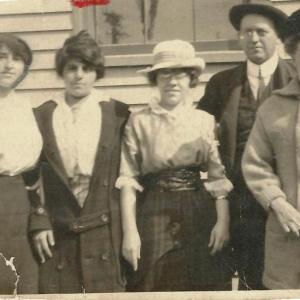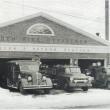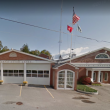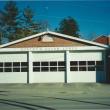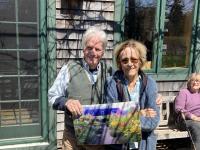Barbara Dyer: Tannery Lane in Camden
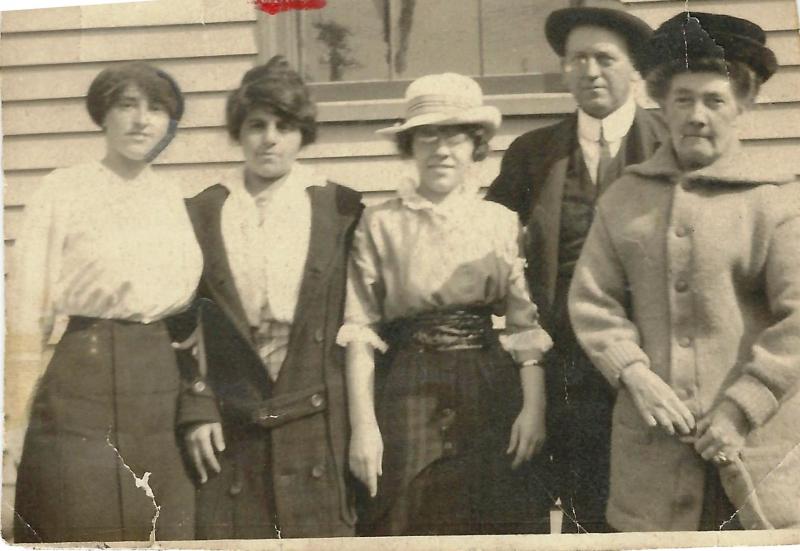 Brewster Shirt Factory workers. (Photo courtesy Barbara F. Dyer)
Brewster Shirt Factory workers. (Photo courtesy Barbara F. Dyer)
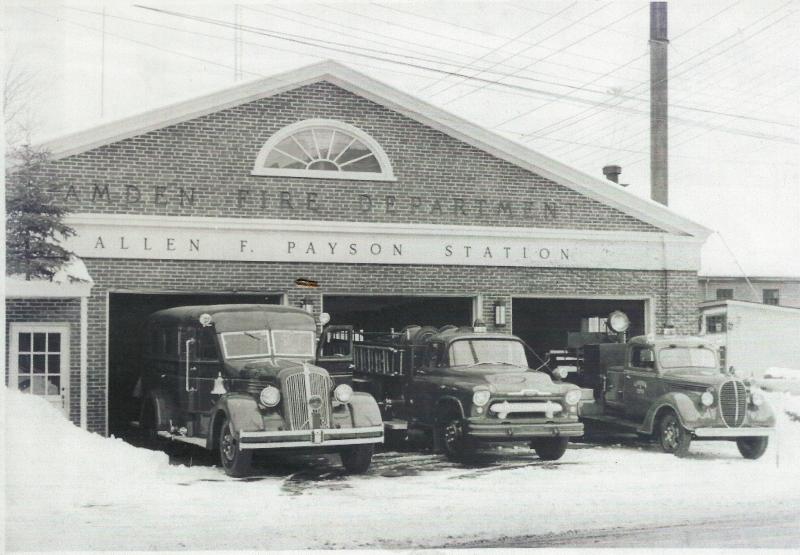 The Allen F. Payson Fire Station, in Camden. (Photo courtesy Barbara F. Dyer)
The Allen F. Payson Fire Station, in Camden. (Photo courtesy Barbara F. Dyer)
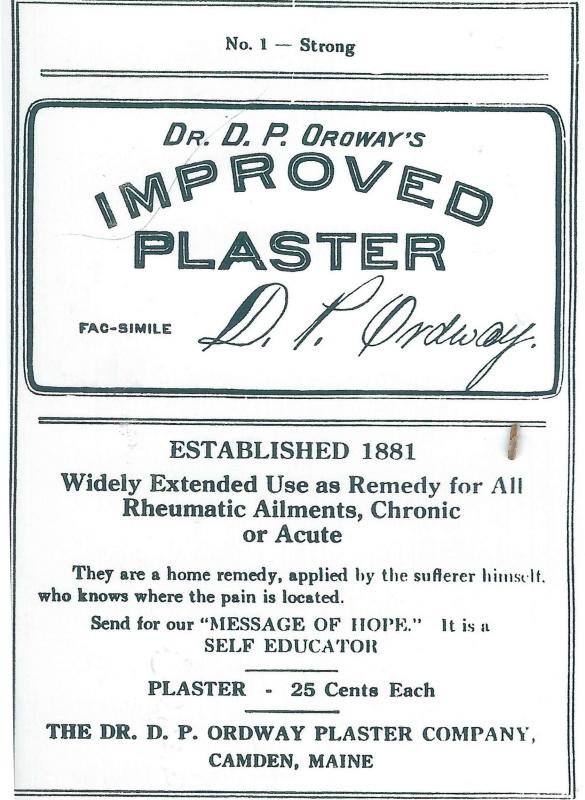 An advertisement for the Ordway Plaster Factory. (Photo courtesy Barbara F. Dyer)
An advertisement for the Ordway Plaster Factory. (Photo courtesy Barbara F. Dyer)
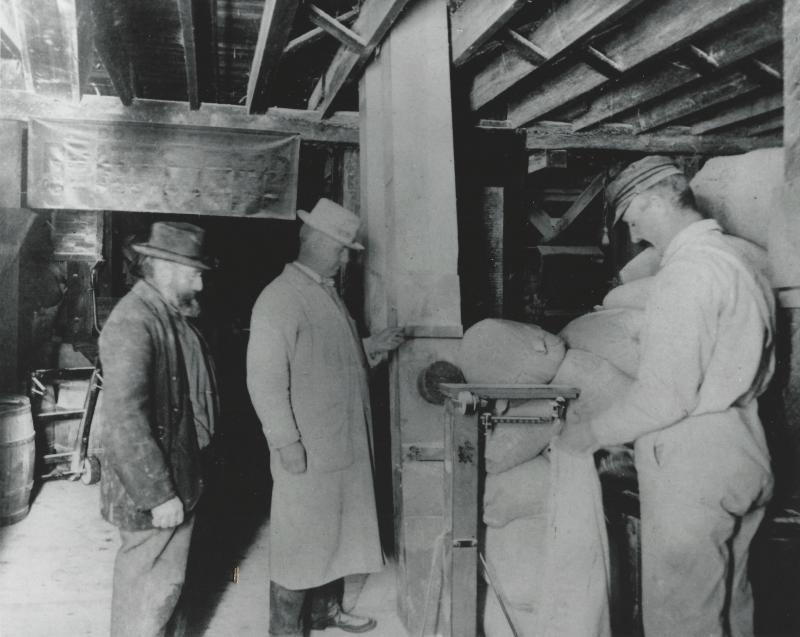 Workers at the Porter Grain and Feed Mill. (Photo courtesy Barbara F. Dyer)
Workers at the Porter Grain and Feed Mill. (Photo courtesy Barbara F. Dyer)
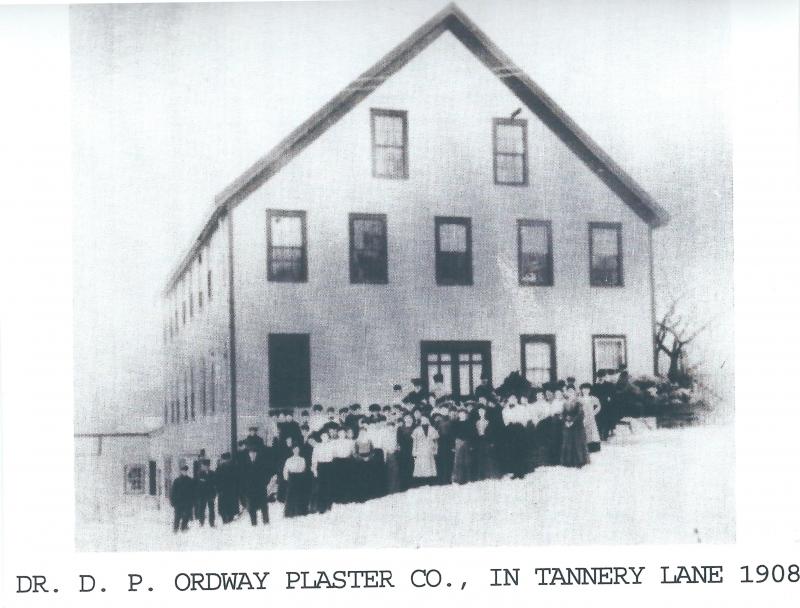 The Dr. P. Ordway Plaster Factory, on Tannery Lane, in Camden. (Photo courtesy Barbara F. Dyer)
The Dr. P. Ordway Plaster Factory, on Tannery Lane, in Camden. (Photo courtesy Barbara F. Dyer)
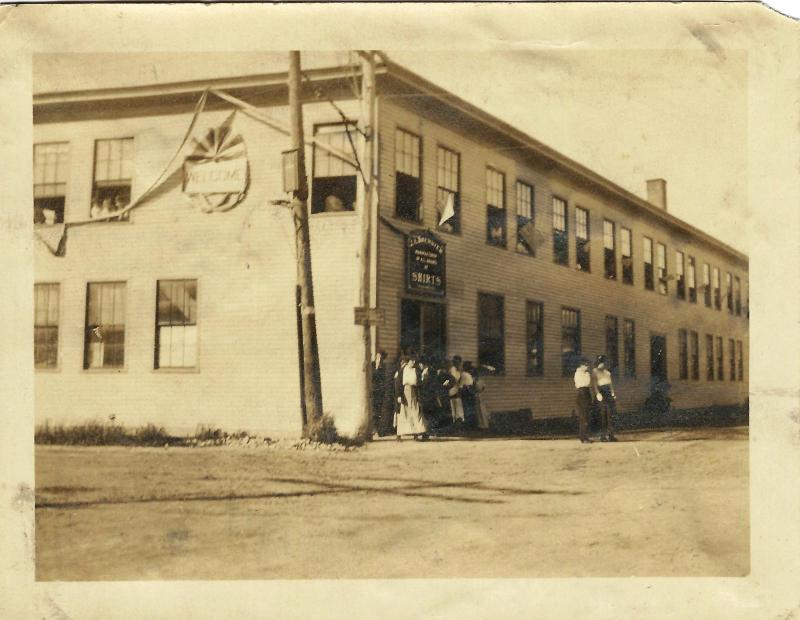 The Brewster Shirt Factory, at the corner of Mechanic and Washington streets, in Camden. (Photo courtesy Barbara F. Dyer)
The Brewster Shirt Factory, at the corner of Mechanic and Washington streets, in Camden. (Photo courtesy Barbara F. Dyer)
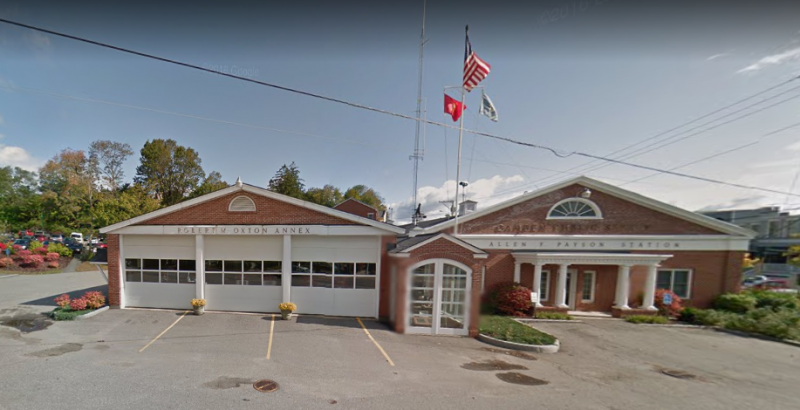 The Camden Public Safety Building. (Photo courtesy Barbara F. Dyer)
The Camden Public Safety Building. (Photo courtesy Barbara F. Dyer)
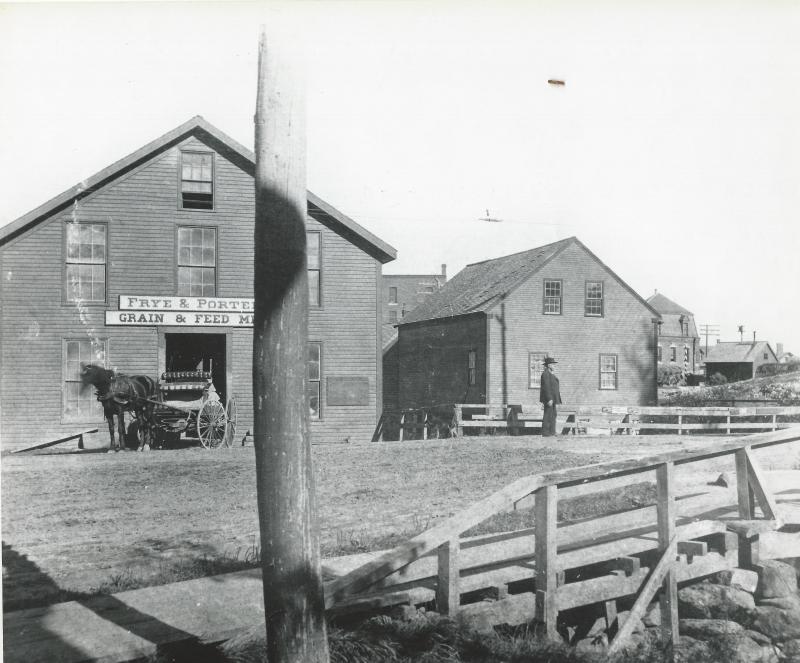 The Frye and Porter Grain and Feed Mill. (Photo courtesy Barbara F. Dyer)
The Frye and Porter Grain and Feed Mill. (Photo courtesy Barbara F. Dyer)
 The Whitehall Inn. (Photo courtesy Barbara F. Dyer)
The Whitehall Inn. (Photo courtesy Barbara F. Dyer)
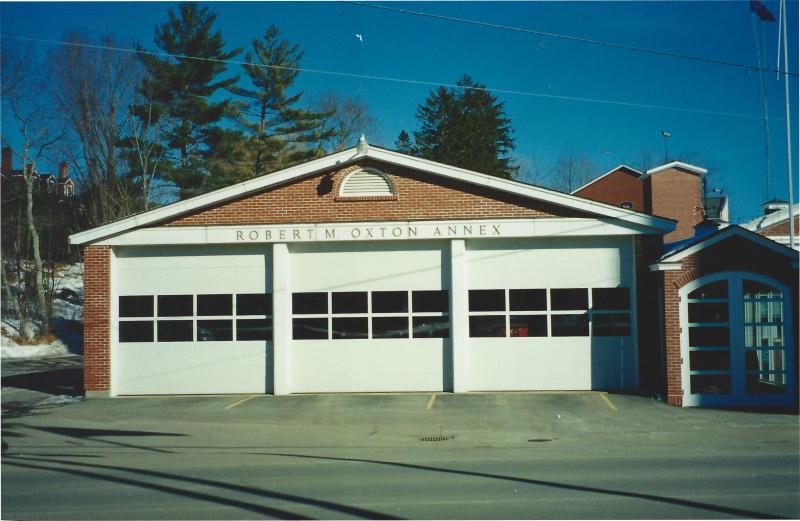 The Robert M. Oxton Annex. (Photo courtesy Barbara F. Dyer)
The Robert M. Oxton Annex. (Photo courtesy Barbara F. Dyer)
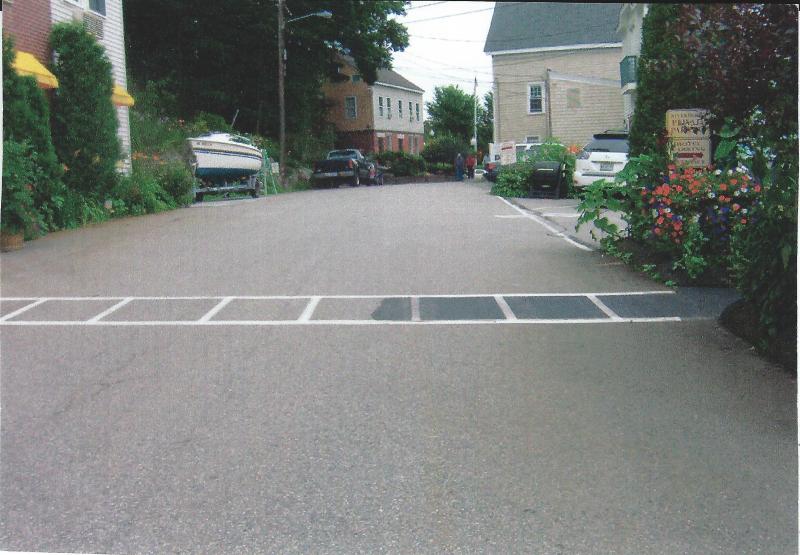 Tannery Lane, looking toward Main Street, in Camden. (Photo courtesy Barbara F. Dyer)
Tannery Lane, looking toward Main Street, in Camden. (Photo courtesy Barbara F. Dyer)
 Brewster Shirt Factory workers. (Photo courtesy Barbara F. Dyer)
Brewster Shirt Factory workers. (Photo courtesy Barbara F. Dyer)
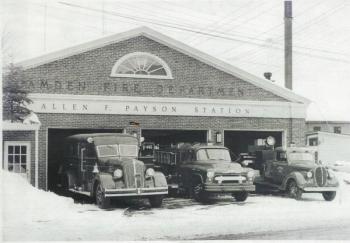 The Allen F. Payson Fire Station, in Camden. (Photo courtesy Barbara F. Dyer)
The Allen F. Payson Fire Station, in Camden. (Photo courtesy Barbara F. Dyer)
 An advertisement for the Ordway Plaster Factory. (Photo courtesy Barbara F. Dyer)
An advertisement for the Ordway Plaster Factory. (Photo courtesy Barbara F. Dyer)
 Workers at the Porter Grain and Feed Mill. (Photo courtesy Barbara F. Dyer)
Workers at the Porter Grain and Feed Mill. (Photo courtesy Barbara F. Dyer)
 The Dr. P. Ordway Plaster Factory, on Tannery Lane, in Camden. (Photo courtesy Barbara F. Dyer)
The Dr. P. Ordway Plaster Factory, on Tannery Lane, in Camden. (Photo courtesy Barbara F. Dyer)
 The Brewster Shirt Factory, at the corner of Mechanic and Washington streets, in Camden. (Photo courtesy Barbara F. Dyer)
The Brewster Shirt Factory, at the corner of Mechanic and Washington streets, in Camden. (Photo courtesy Barbara F. Dyer)
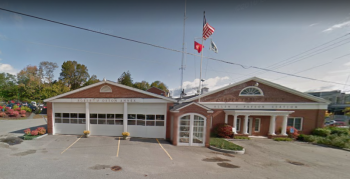 The Camden Public Safety Building. (Photo courtesy Barbara F. Dyer)
The Camden Public Safety Building. (Photo courtesy Barbara F. Dyer)
 The Frye and Porter Grain and Feed Mill. (Photo courtesy Barbara F. Dyer)
The Frye and Porter Grain and Feed Mill. (Photo courtesy Barbara F. Dyer)
 The Whitehall Inn. (Photo courtesy Barbara F. Dyer)
The Whitehall Inn. (Photo courtesy Barbara F. Dyer)
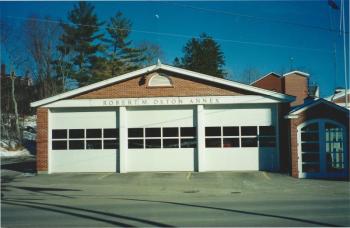 The Robert M. Oxton Annex. (Photo courtesy Barbara F. Dyer)
The Robert M. Oxton Annex. (Photo courtesy Barbara F. Dyer)
 Tannery Lane, looking toward Main Street, in Camden. (Photo courtesy Barbara F. Dyer)
Tannery Lane, looking toward Main Street, in Camden. (Photo courtesy Barbara F. Dyer)
There have been many changes in all of the business district of Camden-by-the-Sea since its first days of incorporation in 1771.
One section that has come to mind is Tannery Lane. As it is today, the large and lovely Riverhouse Hotel, owned by David Dickey, with the whole parking area and hotel surrounded with all kinds of beautiful flowers, as David has a “green thumb.” He also owns a little walking bridge that crosses Megunticook River, and an ice cream stand on the Mechanic Street side. It is a popular addition for tourist and natives alike.
In the very early years, Moses Parker had a tannery there, thus the name. David has also worked years on Moses Parker's home that sets on his property, leading to Central Street. Both the hotel and his home are so close to town, stores and library, but so shielded from the traffic, that you would think you were in the country.
Years ago, there was a blacksmith shop in Tannery Lane. The Frye & Porter Grain and Feed Mill was located near the Washington Street bridge in Tannery Lane and Mechanic Street. Employees shown are Marcellus Metcalf, Everett Duffy (manager) and Luther Bryant. There was enough power from the Megunticook River to turn the waterwheel under the building.
Now, toward the Washington Street end of Tannery Lane is the safety building that houses the Camden Fire Department and the Camden Police Department.
It has changed several times as the Allen Payson Fire Station was there and later the Robert Oxton Fire Station. A public parking section is beside the safety building and another one is on a slight hill nearer the Riverhouse Hotel. Land for parking places is few and far between, so this area is perfect. Town voting is held at the Camden Fire Station, so that parking lot is very handy.
I remember Boynton Chevrolet had a garage near what is now the parking lot, and in 1949 I bought my first new car there. Mr. Boynton and his son, Rodney, ran it.
I had saved money for six years to be able to own a car and not have to walk to the Shipyard from upper Chestnut Street. I went to Camden National Bank to withdraw the money I had saved. Then, I walked to Boynton's garage and saw a pretty green sport coupe car but didn't have time to try it out; drove back to work and my lunch hour was over.
The next morning, I headed down Chestnut Street to work, and by Limerock it began to wobble. So I pulled over on to Limerock, stopped and called Rodney. He laughed and said at the factory they cross-threaded the nuts on the wheels. I was happy that I stopped before going down the next hill or it probably would have been quite an accident. For some reason, I did not think it was funny.
Before the garage was in that location, there was a business called “Dr. Ordway's Plaster Factory.”
Ordway was not doctor, but made mustard plasters that would cure anything you had.
It was a big three-story building and had a thriving business, even in South America. Dr. Ordway wanted someone to advertise for him. A man in the south, who wanted to do the advertising, had his daughter write his business letters. Her writing was so beautiful, Dr. Ordway asked her to marry him (a mail order bride).
She did come up to marry him and was a beautiful southern belle.
The factory had so much mail selling the plasters, and also the premiums earned for selling the plasters, that the factory made Camden a first class post office.
Job and Charles Montgomery took over the management of the factory; Dr. Ordway left town with his secretary. (So the story goes). This left the “southern belle” to fend for herself.
She bought a building and started the Whitehall Inn, adding on. She married again and her second husband died.
She later died, very rich from her success in the Whitehall Inn.
They used to have a picture of her behind one of the doors at the Whitehall Inn. She was wearing a typical low cut dress that she had worn when she came from the south. But because she was now in Maine, someone had filled in the space and made it a high cut dress.
Where the Riverhouse Hotel is now was once an IGA grocery store.
Kenneth Weymouth owned it, but was working too hard, making him unable to spend enough time with family; so he sold the grocery store, and began selling and repairing Electrolux Vacuum cleaners.
He walked, rode his bike, ate healthy and lived to be 100 years of age. He was a very nice person.
David Dickey had an antique shop and gift shops in that large building. He hired a girl to watch over it and be cashier, so people could rent a stall and not have to be there. It was fun. I had one of the booths for antiques, while still working at the Shipyard.
Joseph Brewer had a building in the Tannery Lane, where he moved his business when he down-sized his very successful shirt factory after many years.
There may have been some other businesses in Tannery Lane that I have not remembered, but someone else may. For a tiny street, it has been quite active for many years.
Barbara F. Dyer has lived in Camden all of her life, so far.
Event Date
Address
United States

